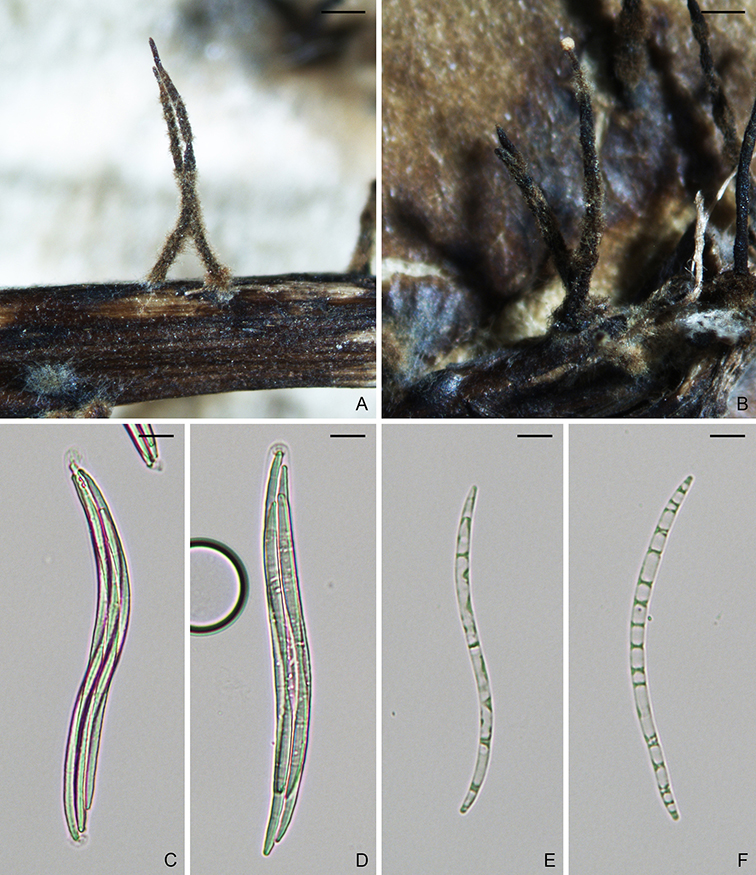
Figure. Pseudohalonectria longirostrum (NYBG01050489). A–B. Ascomata. C–D. Asci. E–F. Ascospores. Scale bars: A–B = 500 µm; C–F = 10 µm.
Pseudohalonectria longirostrum Shearer, Can. J. Bot. 67(7): 1946 (1989).
MycoBank: MB136212.
Morphological description: Ascomata perithecial, submerged, gregarious, brown to orange brown, globose to subglobose, 200–450 µm in diam, with an orange brown to yellow brown, cylindrical, neck, 1900–3700 × 110–170 µm. Paraphyses hyaline, septate. Asci unitunicate, clavate, 8-spored, 100–125 × 9–12 µm, with a refractive ring. Ascospores parallel in the ascus, curved, hyaline to yellowish, filiform to fusiform, 4–8-septate, not constricted at the septum, smooth, 85–110 × 3–5 µm.
Specimens examined: Panama, Barro Colorado Island, Shannon Creek, from submerged twig, Mar. 1981, C.A. Shearer, CS-656-1 (holotype, NYBG01050487, NYBG01050488, NYBG01050489, NYBG03380685, NYBG03380686; ex-type culture, ATCC52674).
Hosts/substrates: from submerged twig.
References:
Shearer CA. 1989. Pseudohalonectria (Lasiosphaeriaceae), an antagonistic genus from wood in freshwater. Canadian Journal of Botany. 67(7):1944–1955.
Geographical distribution: Panama, Barro Colorado Island.
Copyright 2022 by The American Phytopathological Society. Reproduced, by permission, from Luo, J., and Zhang, N. 2022. The Rice Blast Fungus and Allied Species: A Monograph of the Fungal Order Magnaporthales (https://my.apsnet.org/APSStore/Product-Detail.aspx?WebsiteKey=2661527A-8D44-496C-A730-8CFEB6239BE7&iProductCode=46826). American Phytopathological Society, St. Paul, MN.